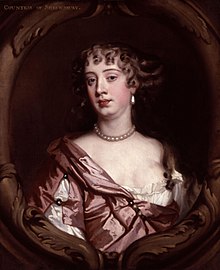
Humphrey Stafford, 1st Duke of Buckingham, 6th Earl of Stafford, 7th Baron Stafford, of Stafford Castle in Staffordshire, was an English nobleman and a military commander in the Hundred Years' War and the Wars of the Roses. Through his mother he had royal descent from King Edward III, his great-grandfather, and from his father, he inherited, at an early age, the earldom of Stafford. By his marriage to a daughter of Ralph, Earl of Westmorland, Humphrey was related to the powerful Neville family and to many of the leading aristocratic houses of the time. He joined the English campaign in France with King Henry V in 1420 and following Henry V's death two years later he became a councillor for the new king, the nine-month-old Henry VI. Stafford acted as a peacemaker during the partisan, factional politics of the 1430s, when Humphrey, Duke of Gloucester, vied with Cardinal Beaufort for political supremacy. Stafford also took part in the eventual arrest of Gloucester in 1447.

Bromsgrove is a town in Worcestershire, England, about 16 miles (26 km) northeast of Worcester and 13 miles (21 km) southwest of Birmingham city centre. It had a population of 34,755 in at the 2021 census. It gives its name to the wider Bromsgrove District, of which it is the largest town and administrative centre. In the Middle Ages, it was a small market town, primarily producing cloth through the early modern period. In the eighteenth and nineteenth centuries, it became a major centre for nail making.

Earl of Shrewsbury is a hereditary title of nobility created twice in the Peerage of England. The second earldom dates to 1442. The holder of the Earldom of Shrewsbury also holds the title of Earl of Waterford (1446) in the Peerage of Ireland and Earl Talbot (1784) in the Peerage of Great Britain. Shrewsbury and Waterford are the oldest earldoms in their peerages held by someone with no higher title, and as such the Earl of Shrewsbury is sometimes described as the premier earl of England and Ireland.
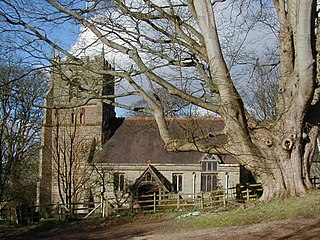
Beoley is a small village and larger civil parish north of Redditch in the Bromsgrove District of Worcestershire. It adjoins Warwickshire to the east. The 2021 census gave a parish population of 984, mostly at Holt End. The parish includes the hamlet of Portway, adjacent to the A435 road. It adjoins the Redditch suburb of Church Hill and the civil parishes of Alvechurch, Tanworth-in-Arden, Mappleborough Green and Wythall.
John Talbot, 3rd Earl of Shrewsbury, 3rd Earl of Waterford, 9th Baron Talbot was an English nobleman. He also held the subsidiary titles of 12th Baron Strange of Blackmere and 8th Baron Furnivall. Although a soldier and an administrator, he was described by William of Worcester as 'more devoted to literature and the muses, than to politics and arms'.
Francis Talbot, 11th Earl of Shrewsbury, 11th Earl of Waterford, was an English peer who was a Royalist officer in the English Civil War. He survived the war only to be mortally wounded in a duel with the Duke of Buckingham who was having an affair with his wife.
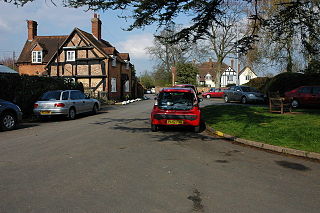
Hanley Castle is a village and civil parish in Worcestershire, England, between the towns of Malvern and Upton upon Severn and a short distance from the River Severn. It lies in the administrative area of Malvern Hills District, and is part of the informal region known as The Malverns. It is served primarily by bus service 332 Worcester - Upton upon Severn - Hanley Castle operated by Aston Coaches and 363 Worcester - Tewkesbury operated by First Worcester.

Upton Warren is a village and civil parish in the Wychavon district, in Worcestershire, England. The village is situated just off the A38 road between Bromsgrove and Droitwich Spa, and on the River Salwarpe. In the 2001 census, the parish, which also contains the small hamlet of Cooksey Green, had a population of 291.

Worcestershire was the county where the first battle and last battle of the English Civil War took place. The first battle, the Battle of Powick Bridge, fought on 23 September 1642, was a cavalry skirmish and a victory for the Royalists (Cavaliers). The final battle, the battle of Worcester, fought on 3 September 1651, was decisive and ended the war with a Parliamentary (Roundhead) victory and King Charles II a wanted fugitive.

Sir Gilbert Talbot of Grafton, KG, was an English Tudor knight, a younger son of John Talbot, 2nd Earl of Shrewsbury and 2nd Earl of Waterford, and Elizabeth Butler.

Sir Humphrey Coningsby,, was an English lawyer, a senior judge as a Justice of the King's Bench and a major landholder.

The Church of St John the Baptist, Bromsgrove is a Grade I listed parish church in the Church of England in Bromsgrove.
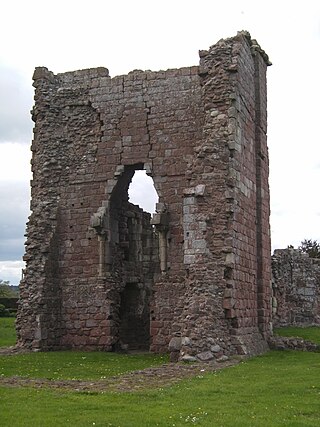
Roger Corbet was an English soldier, politician and landowner. He was a client of Thomas FitzAlan, 12th Earl of Arundel and was implicated in the disorder that accompanied Arundel's rule in Shropshire. He probably fought at the Battle of Agincourt. After the untimely death of his patron, he became a successful municipal politician at Shrewsbury and represented Shrewsbury twice and Shropshire once in the House of Commons of England.
Sir Humphrey Stafford of Grafton Manor in Worcestershire, was an English nobleman who took part in the War of the Roses on the Yorkist side. He was executed by Henry VII following his fighting for Richard III and his role in the Stafford and Lovell rebellion.
Sir Humphrey Stafford (b. 1384-1419) of Grafton in Worcestershire, was a prominent member of the fifteenth-century English gentry in Worcestershire, for which county he was Member of the English Parliament in 1415.

Sir Humphrey Stafford"With the Silver Hand", of Hooke in Dorset and of Southwick in the parish of North Bradley in Wiltshire was a member of the English gentry in the south west of England, where he was a Member of Parliament multiple times and an important royal official.
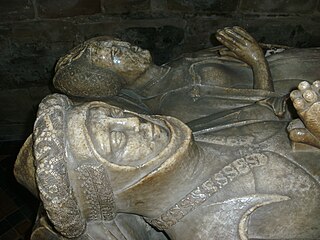
Sir Humphrey Stafford, of Grafton in the parish of Bromsgrove, Worcestershire, was an English nobleman who served as Governor of Calais.

William Stafford of Southwick, Wiltshire, was an English gentleman who was killed in June 1450 during Jack Cade's Rebellion, together with his second cousin Sir Humphrey Stafford of Grafton in the parish of Bromsgrove, Worcestershire. Both appear as characters in Shakespeare's play Henry VI, Part 2, in which they are described as brothers.

The feudal barony of Stafford was a feudal barony the caput of which was at Stafford Castle in Staffordshire, England. The feudal barons were subsequently created Barons Stafford (1299) by writ, Earls of Stafford (1351) and Dukes of Buckingham (1444). After the execution of the 3rd Duke in 1521, and his posthumous attainder, the castle and manor of Stafford escheated to the crown, and all the peerage titles were forfeited. However the castle and manor of Stafford were recovered ten years later in 1531 by his eldest son Henry Stafford, 1st Baron Stafford (1501-1563), who was created a baron in 1547. His descendants, much reduced in wealth and prestige, retained possession of Stafford Castle and the widow of the 4th Baron was still seated there during the Civil War when shortly after 1643 it was destroyed by Parliamentarian forces. By the time of the 6th Baron Stafford (d.1640) the family had sunken into poverty and obscurity, and in 1639 he suffered the indignity of being requested by King Charles I to surrender his title on account of his "having no parte of the inheritance of the said Lord Stafford not any other landes or means whatsoever". On his death the following year, unmarried and without issue, the senior male line of the Stafford family was extinguished. However a vestige of the feudal barony may be deemed to have continued in the families of later owners of the manor of Stafford and site of the Castle, after the abolition of feudal tenure in 1661.


